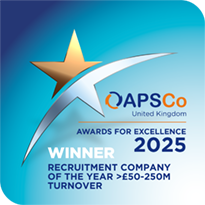From 1 January 2026, Ireland will introduce a landmark reform in its retirement savings landscape: the Auto-Enrolment Retirement Savings Scheme, known as My Future Fund. This initiative marks a significant shift in how pensions are managed and accessed, particularly for employees without existing pension coverage. For Irish businesses, the scheme presents both opportunities and challenges that require careful planning and strategic response.
What is pension auto-enrolment?
Auto-enrolment is a mandatory pension savings scheme designed to ensure that more workers are financially prepared for retirement. Under the scheme, eligible employees will be automatically enrolled into a pension fund, with contributions made by the employee, the employer, and the Government.
To qualify for automatic enrolment, employees must meet the following criteria:
Be aged between 23 and 60
Earn €20,000 or more annually
Do not currently contribute to a pension scheme
The scheme is administered by the newly established National Automatic Enrolment Retirement Savings Authority (NAERSA) and supervised by the Pensions Authority.
Contribution structure
The contribution model is phased over ten years to ease the financial impact on both employees and employers. In the first three years, employees and employers will each contribute 1.5% of gross earnings, with the Government adding 0.5%. These rates will increase every three years, reaching 6% from year ten onwards, with the Government contributing 2%.
For every €3 contributed by the employee, the employer matches €3 and the State adds €1, resulting in a total of €7 added to the pension pot. Contributions are capped at earnings of €80,000 per annum.
Implications for Irish businesses
1. Financial impact
The most immediate concern for employers is the increase in payroll costs. While the initial 1.5% contribution may seem modest, the cumulative effect over time (especially as rates rise to 6%) can be substantial. However, employer contributions are eligible for corporation tax relief, which can help offset some of the financial burden. Businesses can consider incorporating rolling forecasts into their financial planning to accommodate these changes and prepare for potential rate reviews by the Pensions Authority.
2. Administrative burden
Auto-enrolment introduces new compliance and operational responsibilities. Employers must:
Monitor employee eligibility based on age and earnings
Manage enrolment, opt-outs, and re-enrolments every two years
Maintain accurate records of contributions
Communicate scheme details and rights to employees
Although NAERSA will handle investment and fund management, employers remain responsible for payroll deductions and ensuring compliance with statutory obligations. This may require updates to payroll systems and additional training for HR and finance teams.
3. Strategic considerations
Businesses with existing pension schemes may choose to continue using them, provided they meet the minimum standards. Employees contributing to qualifying occupational pensions or PRSAs will be exempt from auto-enrolment. However, employers must ensure contributions are made before January 2026 to avoid automatic enrolment into My Future Fund. This presents an opportunity for businesses to review and enhance their current pension offerings, potentially opting for private schemes that offer greater flexibility and higher tax relief for employees in higher income brackets.
4. Workforce engagement
Effective communication is critical to ensure employees understand how auto-enrolment affects their take-home pay, the benefits of long-term savings, and their rights to opt out or suspend contributions. Employers who proactively engage their workforce may see improved staff morale, retention, and financial wellbeing.
Businesses should also prepare for opt-out scenarios, particularly among employees with volatile incomes or financial pressures. While opt-outs are permitted after six months, employees are automatically re-enrolled every two years if still eligible.
Preparing for the transition
With the scheme’s launch date fast approaching, businesses should begin taking measures to ensure a smooth transition. By preparing early and strategically, Irish employers can turn this regulatory shift into a positive force for their organisation and workforce alike, allowing them to demonstrate corporate responsibility while helping their employees achieve a secure future.


.png)


.png)



.jpg)